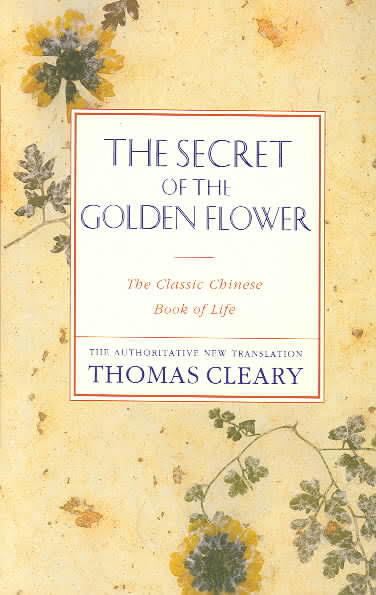8.2 /10 1 Votes8.2
| 4.1/5 Goodreads | |||||||||||||||||||||||||||||||||
 | ||||||||||||||||||||||||||||||||||
Similar | ||||||||||||||||||||||||||||||||||
Edgar cayce and secret of the golden flower introduction and paragraph 1
The Secret of the Golden Flower (Chinese: 太乙金華宗旨; pinyin: Tàiyǐ Jīnhuá Zōngzhǐ) is a Chinese Taoist classic about neidan (inner alchemy) meditation.
Contents
- Edgar cayce and secret of the golden flower introduction and paragraph 1
- The secret of the golden flower
- History
- Methods
- Translations
- References
The secret of the golden flower
History
The text of The Secret of the Golden Flower is attributed to Lü Dongbin of the late Tang dynasty. It is now known to have originated hundreds of years later, and was first published in the early Qing dynasty (清代前期), circa 1668–1692.
Methods
Despite the varieties of impressions, interpretation and opinion expressed by translators, the meditation technique described by The Secret of the Golden Flower is a straightforward, silent method; the book's description of meditation has been characterized as "Zen with details". The meditation technique, set forth in poetic language, reduces to a formula of sitting, breathing, and contemplating.
Sitting primarily relates to a straight posture. Breathing is described in detail, primarily in terms of the esoteric physiology of the path of qi (also known as chi or ki), or breath energy. The energy path associated with breathing has been described as similar to an internal wheel vertically aligned with the spine. When breathing is steady, the wheel turns forward, with breath energy rising in back and descending in front. Bad breathing habits (or bad posture, or even bad thoughts) may cause the wheel not to turn, or move backward, inhibiting the circulation of essential breath energy. In contemplation, one watches thoughts as they arise and recede.
The meditation technique is supplemented by descriptions of affirmations of progress in the course of a daily practice, suggesting stages that could be reached and phenomenon that may be observed such as a feeling of lightness, like floating upward or slight levitation. Such benefits are ascribed to improved internal energy associated with breath energy circulation, improvements that alleviate previously existing impediments. Several drawings portray imagery relevant to the personal evolution of a meditation practitioner, images that may be somewhat confusing in terms of pure rational analysis. "Only after one hundred days of consistent work, only then is the light genuine; only then can one begin to work with the spirit-fire."
The first such illustration represents the first one hundred days, or "gathering the light". The second one represents an emergence of meditative consciousness. The third stage represents a meditative awareness that exists even in mundane, daily life. Stage four represents a higher meditative perception, where all conditions are recognized. Then, varied conditions are portrayed as separately perceived, yet each separate perception is part of a whole of awareness.
Translations
The Secret of the Golden Flower was first translated into German by sinologist Richard Wilhelm, a friend of Carl Jung, who had been introduced to the work by his Chinese teacher. The work was later translated from German to English by Cary F. Baynes. Jung provides comments for both of Wilhelm's major Chinese translations, including (in 1949) the nineteen-page (pp. xxi–xxxix) foreword to the Wilhelm/Baynes translation of the I Ching, discussing the transpersonal aspect, and The commentary on The secret of the golden flower (1929).
In 1991, the text was translated afresh from the Chinese original by Thomas Cleary, a scholar of Eastern studies, who criticized the validity of Wilhelm's translation, characterizing it as incomplete and inaccurate:
Because the still-current Wilhelm/Jung/Baynes edition of this manual contains dangerous and misleading contaminations, a primary consideration was to make the contents of The Secret of the Golden Flower explicitly accessible to both lay and specialist audiences.
Cleary gives some examples of the way that the text was commonly misinterpreted by Wilhelm and Jung, and describes such an instance in the very beginning of the text:
In the first section of this text, for example, Wilhelm translates zhixu zhiling zhi shen, which means a spirit (i.e. mind) that is completely open and completely effective, as "God of Utmost Emptiness and Life." Based on this sort of translation, Jung thought that the Chinese had no idea that they were discussing psychological phenomena. He then tried to repsychologize the terminology, but since he did not quite understand it to begin with he could not but wind up with a distortion in the end.
